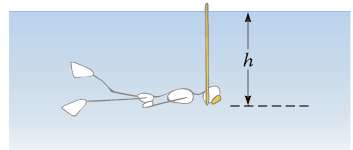Snorkeling elephants. An elephant can use its long trunk as a snorkel while swimming or walking across
Question:
Snorkeling elephants. An elephant can use its long trunk as a snorkel while swimming or walking across the bottom of rivers (Fig. P10.86). The lining of an elephant???s lung is reinforced with connective tissue not present in other mammals, allowing elephants to generate larger pressure differences when breathing. If an elephant???s lungs are 2.0 m below the surface and the minimum pressure difference needed for it to inhale is 200 Pa, what is the maximum pressure difference an elephant???s lungs can generate? Compare your answer to the result for human lungs discussed in Problem 84.
Figure P10.86
?
Data From Problem 84
Long snorkel. Inhalation of a breath occurs when the muscles surrounding the human lungs move to increase the volume of the lungs, thereby reducing the air pressure there. The difference between the reduced pressure and outside atmospheric pressure causes a flow of air into the lungs. The maximum reduction in air pressure that chest muscles can produce in the lungs against the surrounding air pressure on the chest and body is about 3500 Pa. Consider the longest snorkel a person can operate. The minimum pressure difference needed to take in a breath is about 200 Pa. Find the depth h that a person could swim to and still breathe with this snorkel (Fig. P10.84).
Figure P10.84

Step by Step Answer:

College Physics Reasoning and Relationships
ISBN: 978-0840058195
2nd edition
Authors: Nicholas Giordano





